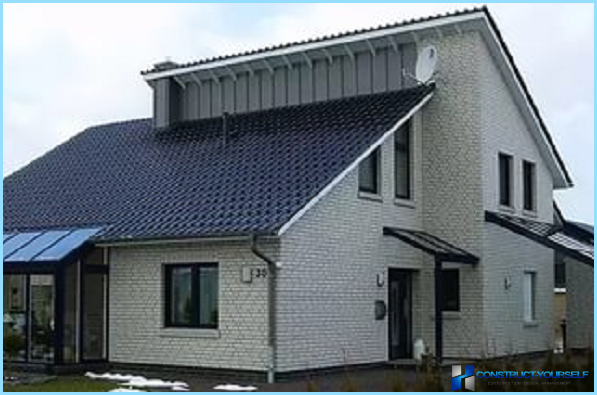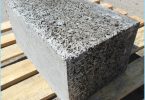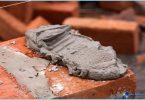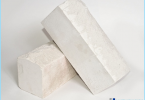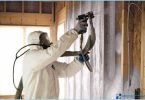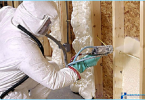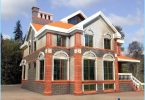The contents
Currently, silicate brick is one of the most sought after materials, despite the old technology of making and primitive collection of raw materials. On the other hand, these methods of manufacture make it simple, and therefore cheap to manufacture. In the modern housing stock built within the last fifty years, approximately 4/5 of all buildings made of building materials based on silicate.
The initial components for the production ↑
Modern composition of sand-lime brick differs from that used in the last century, not much:
- Quartz sand 80-90% of the composition;
- The hydrated slaked lime 10-15%;
- Purified water, the balance, necessary for the wetting and moistening the moulding sand to a plastic state.
All components are carefully pre-cleaned from impurities, are mixed and pressed into raw blank of the future bloc. Further, processing of raw sugar in the autoclave at elevated pressure and temperature, resulting in the solution formed a lasting and sustainable silicocalcium connection, make the material insoluble in water, have high mechanical strength and low coefficient of thermal expansion. About a day unit based on silicate ready to use.
In the modern production of silicatein use several types of additives that do more fluidity and plasticity the molding of the mortar, crushing the air from the pores and prevents the stratification of the masses in the process of autoclaving.
Thermal and strength properties of the material ↑
Given the climatic conditions in which it is assumed the construction of a silicate material, a significant challenge is to increase frost resistance of buildings made from silicate. The usual composition provides an index of frost resistance up to 30 cycles of freezing-defrosting of the material. Special polymer additives allow to increase the figure to 50 units.
Use of special solutions and mineral pigments, resistant to alkaline environment, lime, allows you to create and expand the range of color obverse silicate brick. Even the dye used to make white blocks. Due to high content in the solution of lime and white quartz sand is the natural color of unpainted brick is very close to white. But over time, the adsorbed dust and washed from the surface layer of lime give the outer surface of the silicate grey shade. Therefore, to preserve the natural white shade in the composition and surface layers add oxide of the Titan.
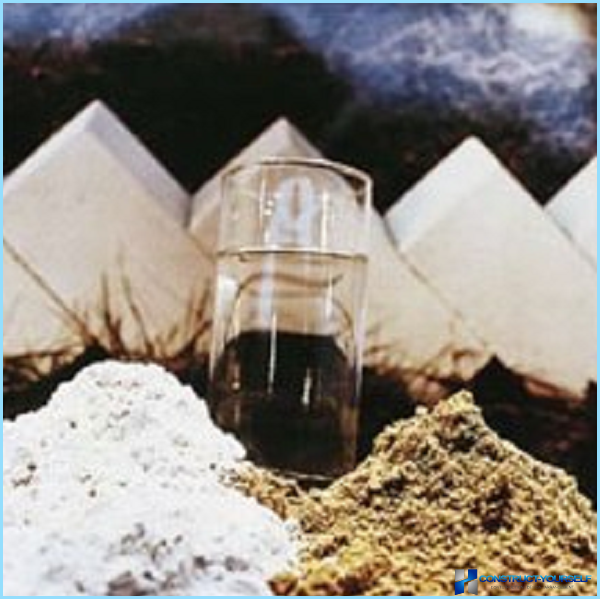
In expensive grades of material based on silicate known European brands to obtain brand resistant to sunlight and permanent structures use of the additive in the solution:
- To 5 kg of cement to mThree the molding sand;
- To 5 kg of white aluminous cement mThree mixture;
- from 0.5 to 10 kg of powder of polymers based on methacrylate components and vinylaromatic alcohols.
Given supplements allow for tens of years to preserve the richness and depth of the original color of the cladding material.
The second, equally important characteristic of silica brick is its ability to keep heat in the house. Ordinary calcium silicate brick has a relatively high coefficient of thermal conductivity and the higher density sand-lime bricks and durability, the «colder» becomes material. The value of the coefficient of thermal conductivity, ordinary brick is 0.55 W/ M*Withon, but in masonry the damage is reduced by about 29-22% due to the high content of cement in the seams.
An important condition of ensuring proper living conditions in buildings of sand-lime brick is a high water vapor permeability coefficient, its value is in the range of 10-12 mg/m*h*PA. This allows the masonry «breathe», creating a climate comparable to the atmosphere in the room made of wood.
To reduce the thermal conductivity of silicate brick is possible in several ways:
- with the help of special additives increase the number of gas pores in the composition and decrease of its density;
- forming in the body of the brick artificial cavities to reduce its weight and thermal conductivity coefficient;
- the use of hydrophobic additives and insulating coating the front surface of silicate material.
Density of sand-lime brick is determined by its strength, specific gravity and resistance to weathering. The denser the brick, the higher the frost resistance and less water absorption coefficient. On average, the dry silicate material with the class average density of 1.6-1.8 can absorb 10-14% water, with its ability to retain heat may be reduced by 30%.
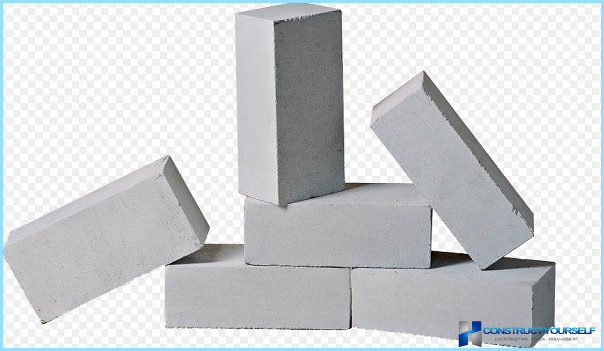
Strength and coefficient of water absorption of this material is much lower than the standard sample, but for facial surfaces is not as important as for masonry load-bearing structures.
The characteristics of the composition for production of silica brick ↑
Depending on the grain size used quartz sand can be quite flexibility to choose and adjust the basic strength characteristics of silica brick. The smaller the fraction, the stronger and denser the result is a solid sand-lime brick. But it is absolutely permeable material not suitable for construction – it just won’t absorb in the required amount of solution and binding materials of masonry. Therefore, large fractions of sand are also added to the initial mixture in a certain proportion, resulting in formation of surface pores and cementing the grains of calcium silicates.
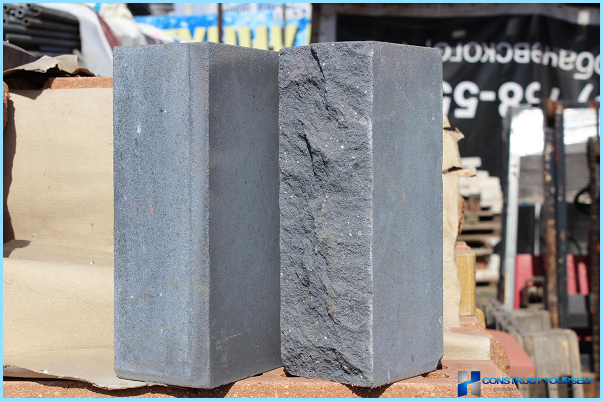
Before use, the sand is cleaned from impurities, particularly clay, and mica. Clay nodules in the prepared sand must have not more than 10 kg for every 1,000 kg or 0.5 mThree prepared molding the mixture, and mica is not more than 5 kg per mThree mixture. Special control is exercised over the purity of the starting material from sulphur or organic inclusions, making the activity of the formation of a strong brick binding is dramatically reduced.
Separate item on the production of high-quality silicate materials control the purity of lime. Lime can be used unslaked or partially slaked, but most often in the form of hydrated slaked form. Particularly attention is paid to the content of magnesium oxide, it should not be more than 5 kg per 1/2 mThree prepared lime.
To increase the frost resistance of the solution was added the products of alumosilicic waste metallurgical industry. The addition of a solution of 70 kg per mThree or 1600 kg of the initial mixture allows to raise the index of frost resistance by 30-35%. In addition, the additive reduces the coefficient of thermal conductivity of the material of 10-12%. Often modified versions of such substances can be added to a solution of masonry to sand-lime brick, which reduces the coefficient of thermal conductivity of the entire masonry.
Specific gravity of silica bricks ↑
Existing standard sand-lime brick is divided into seven main classes according to the average density of the material. The easiest varieties of silicate bricks have a specific weight up to 1000 kg / mThree, the heaviest class of 2.2 has a weight of 2200 kg mThree. The density depends on the strength and brand of silica brick. A heavier grade of brick used for load-bearing structures of high-rise buildings, more easy – for masonry walls. The lightest, most especially with artificial voids are used as thermal insulation and cladding material in the masonry of the main wall.
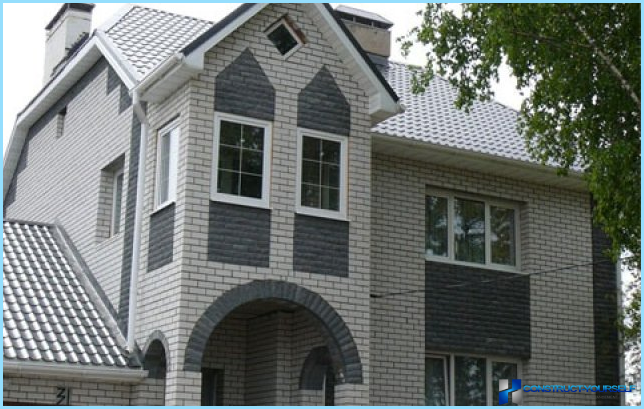
Conclusion ↑
Sand-lime brick will long be a favorite among construction materials, particularly in the private housing, to replace it with similar properties and durability of brick or material there is nothing. Especially as production technologies evolve and allow in the future to silicate materials are more cheap and quality.

